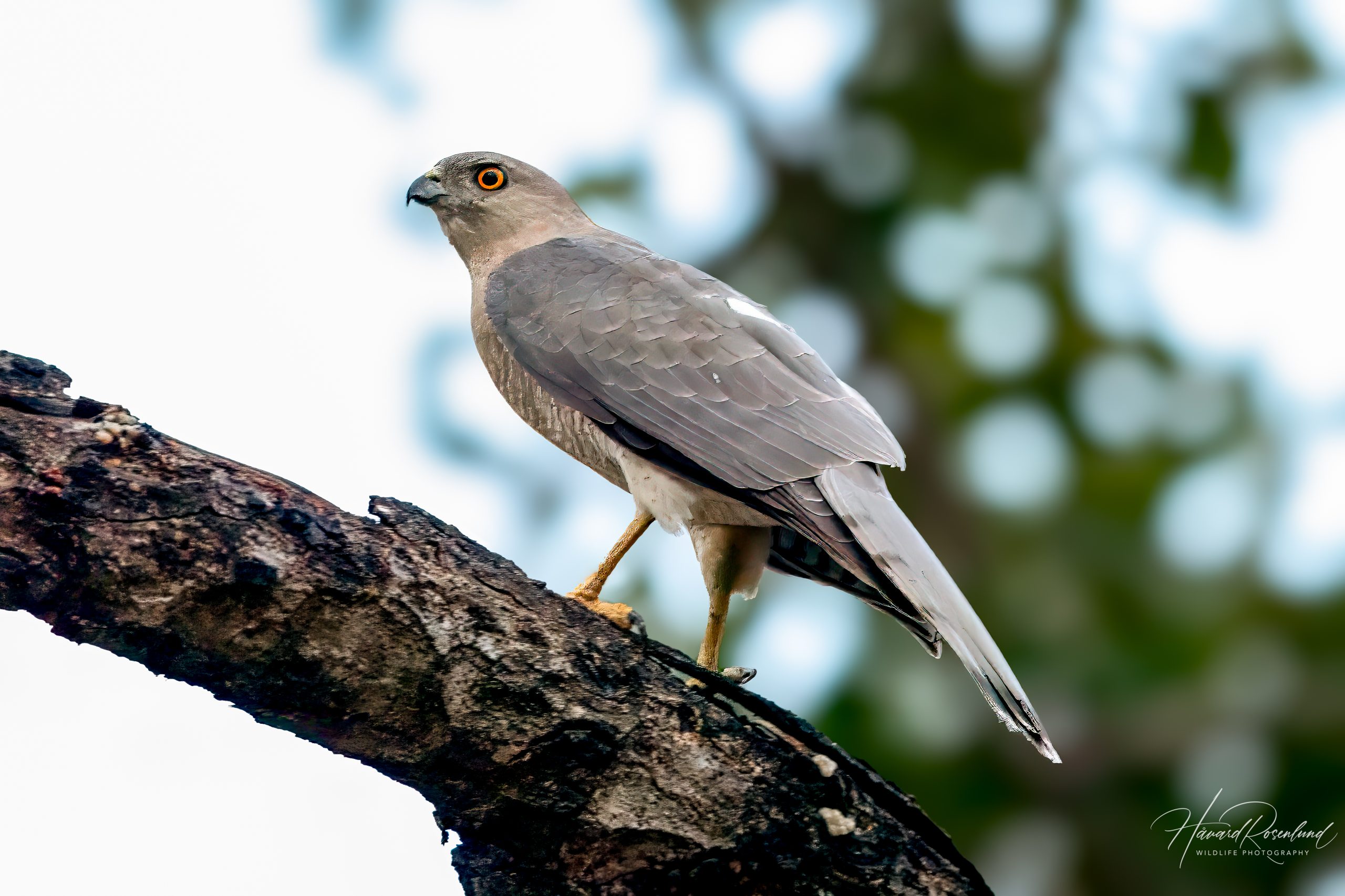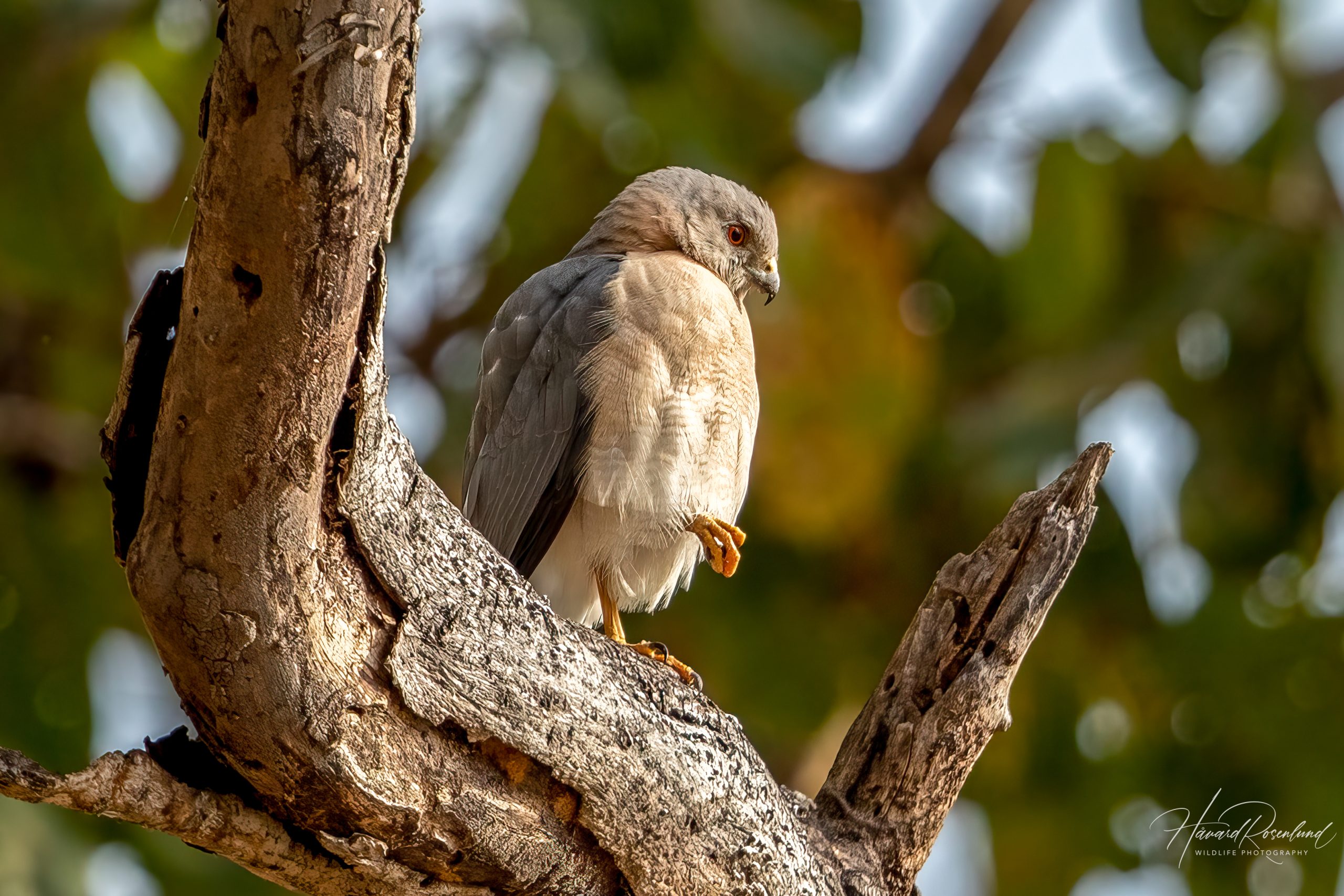Description
The shikra (Tachyspiza badia) is a small hawk found across a wide range in Asia and Africa. The name is derived from the Hindi word “shikra,” meaning hunter. It measures about 25-36 cm (10-14 in) in length with a wingspan of 55-65 cm (22-26 in). The shikra is characterized by its slender body, long legs, and rounded wings. Adult males typically have a slate grey upper body with a white underbelly barred with rufous. Females are larger and have a brownish-grey upper body with a more pronounced barring on the underside. Juveniles are generally browner with streaked underparts. The shikra is similar in size and behavior to the Eurasian sparrowhawk (Accipiter nisus), but it can be distinguished by its overall greyer and paler plumage.
Diet & habitat
The shikra inhabits a variety of habitats including forests, open woodlands, savannas, and even urban areas. It is particularly adaptable, often seen in agricultural lands and gardens. Its diet consists mainly of small birds, mammals, lizards, and large insects. The shikra hunts from a perch, swooping down swiftly to capture its prey with its sharp talons. It is known for its agile flight and ability to maneuver through dense vegetation while chasing prey.
Behavior
Shikras are generally solitary but can sometimes be seen in pairs or small family groups. They are known for their stealthy hunting techniques and can remain motionless for long periods while watching for prey. The shikra is a territorial bird, often seen patrolling its territory and chasing away intruders. Vocalizations include a series of high-pitched whistles, which are often heard during the breeding season.
Nesting
The breeding season of the shikra varies geographically but generally occurs in the warmer or wetter seasons, such as between March and June in India, aligning with the pre-monsoon period, and in August to January in Southern Africa, aligning with the yearly wet season. Shikras build small, platform-like nests made of twigs and lined with leaves, typically situated high in trees. The female lays 3-5 eggs, which are incubated for about 18-21 days. Both parents share the responsibility of incubating the eggs and feeding the chicks. The fledglings leave the nest after about 25-30 days but continue to depend on their parents for food for several more weeks.
Status
The shikra is listed as least concern by the IUCN, reflecting its widespread distribution and stable population. However, localized threats such as habitat destruction, pesticide use, and hunting can affect certain populations. Conservation efforts are essential to ensure that these localized threats do not escalate to a level that could threaten the overall population of this adaptable raptor.







